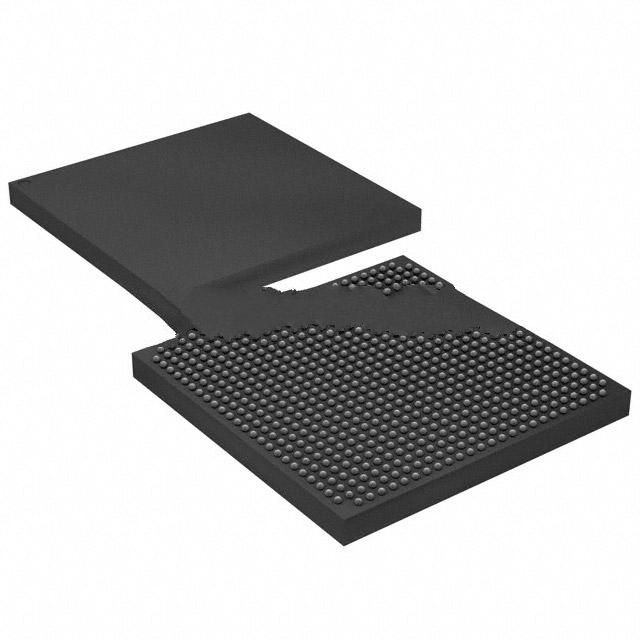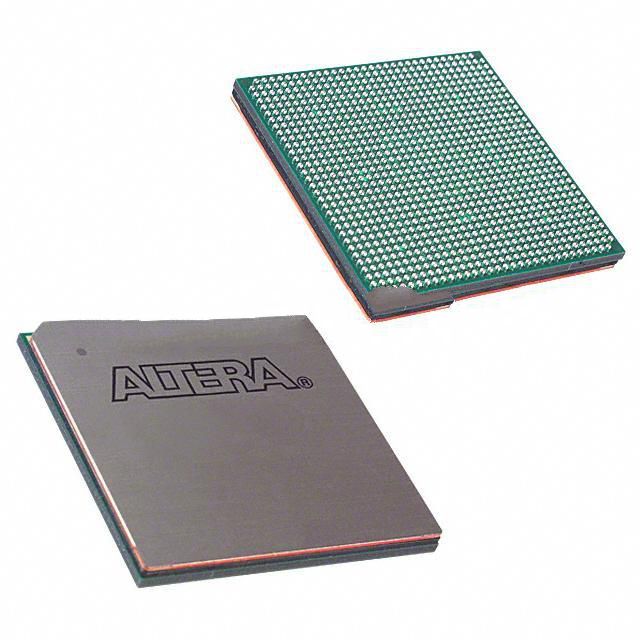EP2A40F1020C9 Product Introduction:
Altera Part Number EP2A40F1020C9(Embedded - FPGAs (Field Programmable Gate Array)), developed and manufactured by Altera, distributed globally by Jinftry. We distribute various electronic components from world-renowned brands and provide one-stop services, making us a trusted global electronic component distributor.
EP2A40F1020C9 is one of the part numbers distributed by Jinftry, and you can learn about its specifications/configurations, package/case, Datasheet, and other information here. Electronic components are affected by supply and demand, and prices fluctuate frequently. If you have a demand, please do not hesitate to send us an RFQ or email us immediately sales@jinftry.com Please inquire about the real-time unit price, Data Code, Lead time, payment terms, and any other information you would like to know. We will do our best to provide you with a quotation and reply as soon as possible.
Introducing the Intel EP2A40F1020C9, a cutting-edge programmable logic device designed to revolutionize the world of digital electronics. With its advanced features and unparalleled performance, this device is set to redefine the boundaries of what is possible in the field of programmable logic.
The EP2A40F1020C9 boasts an impressive array of features that make it a standout choice for engineers and designers. With a generous capacity of 40,000 logic elements, this device offers ample space for complex designs and applications. Its high-speed performance, with a maximum operating frequency of 500 MHz, ensures that even the most demanding tasks can be executed with ease.
This programmable logic device is highly versatile, making it suitable for a wide range of applications. From telecommunications and networking to industrial automation and automotive systems, the EP2A40F1020C9 can handle it all. Its robust design and reliability make it an ideal choice for mission-critical applications where performance and stability are paramount.
The EP2A40F1020C9 also offers a range of advanced features, including embedded memory blocks, high-speed transceivers, and support for various I/O standards. This ensures seamless integration with existing systems and allows for easy scalability and future-proofing.
In conclusion, the Intel EP2A40F1020C9 is a game-changer in the world of programmable logic devices. With its impressive features, versatility, and reliability, it is the perfect choice for engineers and designers looking to push the boundaries of what is possible in the digital electronics field.
Field-Programmable Gate Array (FPGA) is an integrated circuit whose core is an array of programmable logic units, which can be connected through a network of programmable interconnects to form complex digital circuits. Each logical unit contains lookup tables (LUTs), triggers, and other basic logical elements that can be configured to perform various logical operations. This structure allows the FPGA to be programmed by the user after the factory to implement specific logic functions, and can be reprogrammed multiple times to suit different application needs.
Application
FPGA (Field-Programmable Gate Array) The primary role of FPGas is to provide powerful parallel processing capabilities and a high degree of flexibility. The application field of FPGA is extremely wide, covering almost all electronic systems requiring high performance and high flexibility. In the field of communication, FPGA is used to achieve high-speed data processing, protocol conversion, data compression and other functions to improve the performance and stability of communication systems. In terms of digital signal processing, the parallel processing capability of FPGA makes it an ideal choice for audio processing, video codec, image processing and other fields. In addition, FPgas are also widely used in industrial automation, automotive electronics, aerospace, medical equipment and other fields to achieve complex control and data processing tasks.
FAQ about Embedded - FPGAs (Field Programmable Gate Array)
-
1. Can FPGAs replace microcontrollers?
FPGAs cannot completely replace microcontrollers (MCUs). Although FPGAs and MCUs have their own characteristics and advantages in functions and applications, FPGAs cannot completely replace MCUs. There are significant differences between FPGAs and MCUs in terms of programmability, processing power, flexibility, development cycle, and cost.
The main differences between FPGAs and MCUs include:
Programmability: FPGAs are programmable and can be reprogrammed to achieve new functions, while MCUs are fixed and cannot be changed.
Processing power: FPGAs are usually used in high-performance computing, digital signal processing, image processing, and other fields, while MCUs are usually used for simple tasks such as controlling and monitoring equipment and sensors.
Flexibility: FPGA is more flexible than MCU and can be programmed and reprogrammed according to different applications, while MCU can usually only run predefined programs in its internal memory.
Development cycle: FPGA has a longer development cycle than MCU because FPGA needs to be designed, verified and debugged, while MCU usually only needs to write and debug programs.
Cost: FPGA costs more than MCU because FPGA needs to be manufactured and tested, and a lot of design and verification work is required, while MCU has a relatively low cost.
In specific application scenarios, FPGA and MCU each have their own advantages:
Advantages of FPGA: high programmability, parallel processing capability, high performance, suitable for applications that require rapid prototyping and system upgrades, suitable for scenarios with high real-time requirements.
Advantages of MCU: high integration, low cost, low power consumption, suitable for scenarios with strict power consumption requirements.
In summary, although FPGA performs well in some high-performance and flexible application scenarios, MCU still has irreplaceable advantages in simple control and monitoring tasks.
-
2. Is FPGA faster than CPU?
FPGAs are faster than CPUs in some cases. FPGAs are programmable hardware devices whose internal architecture can be configured by users as needed, which enables them to process multiple computing tasks in parallel, resulting in higher computing performance in some scenarios.
FPGAs and CPUs have different architectures and design goals. CPUs are general-purpose processors that can perform a variety of tasks, but may require multiple clock cycles to process specific operations. FPGAs, on the other hand, achieve specific computing structures by reorganizing circuits, and have higher parallelism and efficiency. For example, when processing specific tasks such as signals and images, FPGAs can complete them faster than CPUs.
The main advantage of FPGAs is their programmability and flexibility. FPGAs can be reprogrammed and reconfigured as needed, which enables designers to quickly test new and updated algorithms without developing and releasing new hardware, thereby speeding up time to market and saving costs. In addition, FPGAs offer the advantages of superior performance and reduced latency, and are suitable for real-time applications that require low latency and deterministic latency.
-
3. Is FPGA good for AI ?
FPGAs are good for AI. FPGAs offer a variety of advantages in the field of AI, including high performance, low latency, cost-effectiveness, energy efficiency and flexibility.
The main advantages of FPGAs in the field of AI include:
High performance and low latency: FPGAs offer low latency as well as deterministic latency, which is critical for many applications with strict deadlines, such as real-time applications such as speech recognition, video streaming and action recognition.
Cost-effectiveness: FPGAs can be reprogrammed for different data types and functions after manufacturing, which creates value compared to replacing applications with new hardware. By integrating additional functions onto the same chip, designers can reduce costs and save board space.
Energy efficiency: FPGAs enable designers to fine-tune hardware according to application requirements, using techniques such as INT8 quantization to reduce memory and computing requirements, thereby reducing energy consumption.
Flexibility and customization: FPGA can be optimized at the hardware level for specific algorithms, reducing unnecessary computing and storage overhead. For example, AMD's Alveo V80 accelerator card uses Versal FPGA adaptive SoC and HBM technology to provide efficient computing power.
In summary, FPGA has significant advantages in the field of AI, including high performance, low latency, cost-effectiveness, energy efficiency and flexibility, making it an ideal solution in AI applications.
 Lead free / RoHS Compliant
Lead free / RoHS Compliant



























